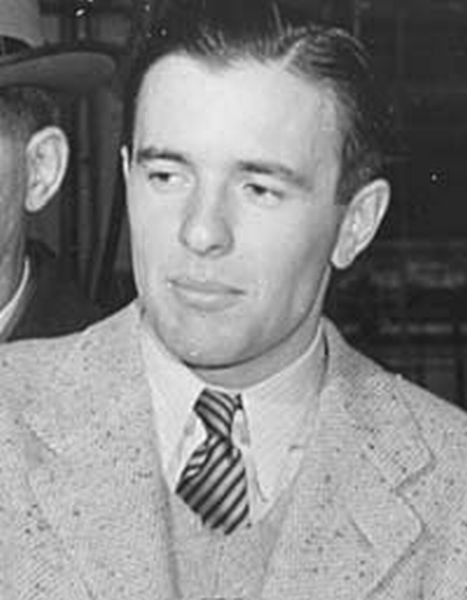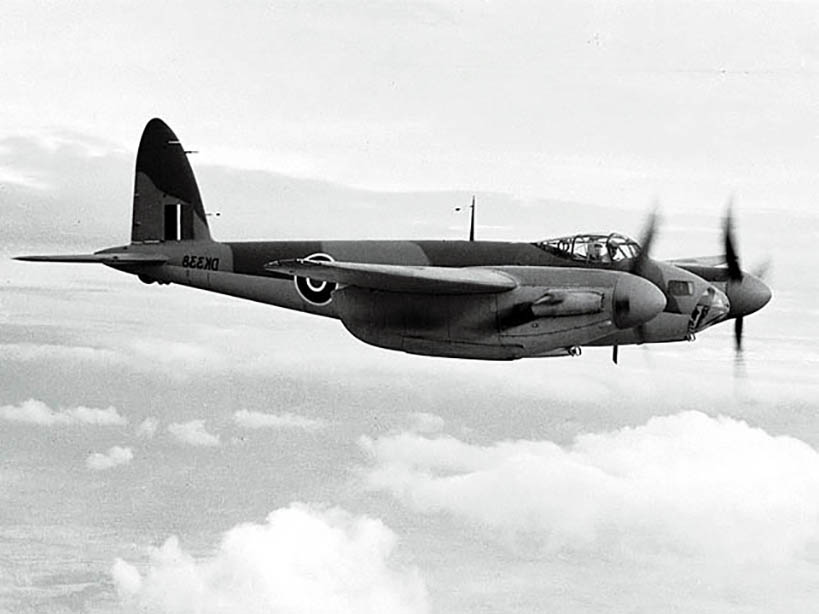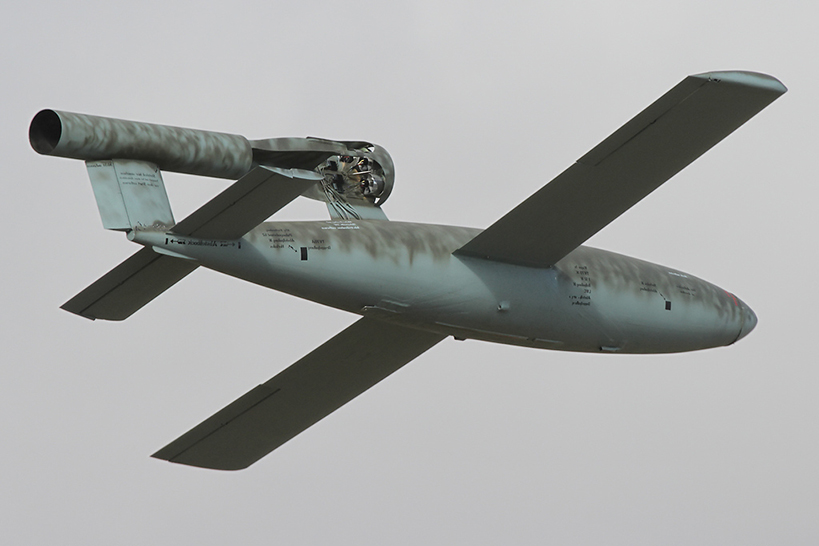Bannock, Russell
- Date of birth:
- November 1st, 1919 (Edmonton/Alberta, Canada)
- Date of death:
- January 4th, 2020
- Service number:
- C.1086
- Nationality:
- Canadian (1931-present, Constitutional Monarchy)
Biography
Russell Bannock was born in Edmonton in 1919, and worked as a commercial pilot before the Second World War.
After entering the Royal Canadian Air Force (RCAF), he received his wings in 1940 and was appointed as an instructor at Trenton, Ontario. Later he was posted to Royal Air Force Ferry Command from June to August 1942.
In September 1942, Bannock became chief instructor with the Flying Instructor School at Arnprior in Ontario. Bannock's request for overseas service was approved in 1944 and he joined 60 Operational Training Unit based in High Ercall, England.
In June 1944, Bannock was transferred to No. 418 Squadron RCAF, flying intruder missions over Europe with the de Havilland Mosquito Mk VI fighter-bomber. He quickly proved skilled at this type of operation and achieved his first victories. In October 1944, he took command of the squadron.
Bannock also flew operations against the German V-1s launched against London and southern England. On one mission he shot down four V-1s in one hour. He became known as the "Saviour of London" as a result of his success. Bannock was transferred to No. 406 Squadron RCAF in November 1944 as commanding officer
By April 1945, Bannock had destroyed 11 enemy aircraft (including 2 on the ground), 4 damaged in the air and 19.5 V-1's destroyed.
Bannock became Director of Operations, RCAF Overseas Headquarters, in London in May 1945 until September 1945 when he attended the Royal Air Force Staff College.
Retiring from the RCAF in 1946, he joined the de Havilland Aircraft Company as chief test pilot, flying prototypes like the Beaver and various short take-off and landing aircraft. In 1950 Bannock became Director of Military Sales and later Vice President. In 1968 he formed his own consulting business, Bannock Aerospace Ltd.
In 1956, Bannock was appointed an associate fellow of the Canadian Aeronautical Institute. He was also chairman of the Canadian Aerospace Industries Associationís Export Committee 1964-- -1968, and was a director from 1976-1977. Bannock was also President of the Canadian Fighter Pilots Association.
October, 1944: promoted to the rank of Wing Commander.
Do you have more information about this person? Inform us!
- Period:
- Second World War (1939-1945)
- Rank:
- Squadron Leader
- Unit:
- No. 418 (City of Edmonton) Squadron, Royal Canadian Air Force
- Awarded on:
- October 3rd, 1944
"This officer has completed numerous sorties, including several attacks on enemy airfields on which he has caused much disruption. He is a highly efficient flight commander and has shown much skill and initiative in the planning and execution of his missions. His successes include the destruction of many flying bombs, 3 of which he destroyed in one patrol."
- Period:
- Second World War (1939-1945)
- Rank:
- Squadron Leader
- Unit:
- No. 418 (City of Edmonton) Squadron, Royal Canadian Air Force
- Awarded on:
- January 9th, 1945
"This officer has displayed outstanding ability, great determination and devotion to duty. Within recent months he has completed a number of sorties against air fields, some of them far into enemy territory. His sterling qualities were well evidenced one night in September, 1944, during an attack on an enemy airfield. Over the target, Squadron Leader Bannock shot down two enemy aircraft. In the second of the fights his own aircraft was damaged by flying debris. One engine failed but he flew his aircraft several hundred miles back to base where he effected a safe landing."
Second DFC awarded as a bar for on the ribbon of the first DFC
- Period:
- Second World War (1939-1945)
- Rank:
- Acting Wing Commander
- Unit:
- No. 406 (Lynx) Squadron, Royal Canadian Air Force
- Awarded on:
- August 17th, 1945
"As squadron commander, Wing Commander Bannock has proved to be an outstanding success. Since the award of the Distinguished Flying Cross he has destroyed a further seven enemy aircraft bringing his total victories to at least eleven enemy aircraft destroyed and others damaged. He has also destroyed nineteen flying bombs by night. In addition he has caused considerable disruption to the enemy's lines of communication. Under this officer's inspiring leadership his squadron has obtained a fine record of successes and reached a high standard of operational efficiency."
- Period:
- Second World War (1939-1945)
- Period:
- Second World War (1939-1945)
- Period:
- Second World War (1939-1945)
- Period:
- Second World War (1939-1945)
Sources
- Photo 1: Tom MacNeill
- - Peter Pigott - Flying Canucks: famous Canadian aviators, Volume 1
- Aces of WW2
- Supplement to The London Gazette Issue 36728 published on the 29 September 1944
- Third Supplement to The London Gazette Issue 36883 published on the 5 January 1945
- Supplement to The London Gazette Issue 37228 published on the 14 August 1945
- AFRO 471/45 dated 16 March 1945










